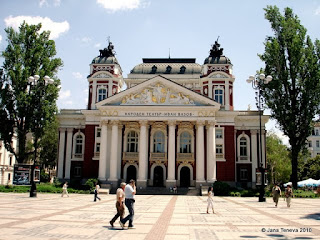And just to show you that Bremen is not only about the famous "Bremer
Stadtsmusikanten" I show some more pictures from there!
The building of the main rail station is really impressive. Inside one can see
some beautiful mosaic works depicting the most famous places of
interests in the city.
Next to the city musicians also the pig statues are known as a
must-take-in-to-picture...
There is a lovely wind mill (which works as a
two-floor-brasserie) and is located on an island in the river Weser. A
cute and colourful scarecrow is guarding it:)
Another lovely place for a walk, a drink or a dinner is the old
quarter "Schnoor"-the picture above. Its name comes from the old German word
"Schnur"(=eng. "lace").





















































